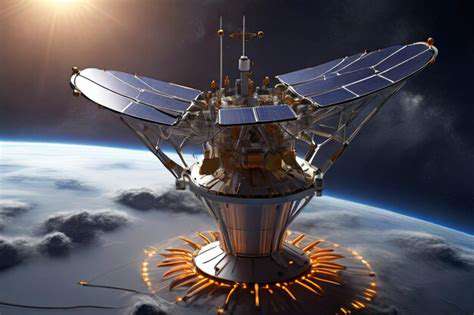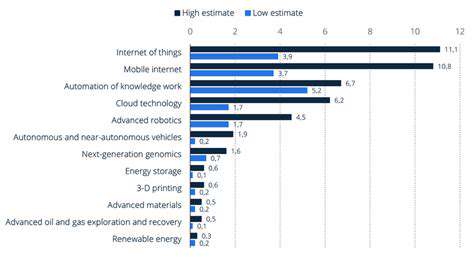
Harnessing Solar Energy in Space
Solar power satellites (SPS) represent a futuristic approach to harnessing the abundant solar energy available in space. Unlike traditional solar panels on Earth, SPS systems would capture sunlight in space, where it's consistently strong and uninterrupted by weather patterns. This constant energy source could then be beamed down to Earth via microwave radiation, providing a potentially clean and sustainable power source.
The concept of beaming energy from space is not entirely new; it's been explored in various forms for decades. However, the scale and complexity of an SPS system are substantial, requiring advanced technology in areas such as solar panel design, microwave transmission, and energy storage. This innovative approach offers the potential to address the growing global energy demand in a sustainable and environmentally friendly way.
Technological Advancements Needed
Several key technological advancements are crucial for the feasibility of SPS. These include the development of extremely efficient solar cells capable of withstanding the harsh space environment. Furthermore, robust and reliable microwave transmission systems are needed to beam the captured solar energy down to designated receiver stations on Earth. The efficiency of these transmission systems directly impacts the overall cost-effectiveness of the SPS project.
Another critical area is the advancement of energy storage technologies. Storing the collected solar energy for use during periods of low sunlight or transmission interruptions is essential for a reliable power source. This is a complex challenge that needs further research and development.
Environmental Impact and Sustainability
Proponents of SPS highlight its potential for creating a sustainable energy source, reducing reliance on fossil fuels, and mitigating climate change. The absence of greenhouse gas emissions during energy production is a significant advantage. However, potential negative impacts on space debris and potential interference with satellite communications also require careful consideration.
Economic Considerations and Infrastructure
The immense capital investment required for developing and deploying an SPS system is a significant hurdle. Constructing and launching the necessary space-based infrastructure, along with terrestrial receiving stations, would be a monumental undertaking. The cost of development and deployment could be significantly high, potentially hindering initial adoption.
Potential Benefits and Applications
Beyond powering homes and industries, SPS could potentially revolutionize remote areas with limited or no access to traditional energy grids. This opens doors to applications in developing nations and disaster relief efforts. The constant supply of renewable energy could foster economic growth and development in underserved regions. Furthermore, SPS could provide a steady power source for critical infrastructure, including hospitals and communication networks.
Raw vegan snacking isn't just about avoiding cooked foods; it's about embracing a vibrant, delicious way of nourishing your body with unprocessed goodness. It's a journey of exploration, where you discover a world of flavors and textures that are both satisfying and healthy. Experiment with different combinations of fruits, vegetables, nuts, and seeds to find what truly resonates with your palate and energy levels. This journey of discovery will lead you to a deeper appreciation for the power of raw foods.
Environmental Considerations and Sustainability
Orbital Debris Mitigation
Space-based energy storage systems, particularly those involving large-scale deployments of solar panels or other components in orbit, introduce the crucial challenge of orbital debris. The sheer volume and intricate nature of these systems, when combined with the potential for malfunctions or collisions, significantly increase the risk of generating space junk. Careful design considerations are essential to minimize the creation of new debris and to ensure the safe disposal or de-orbiting of components at the end of their operational lifespan. This proactive approach is vital for maintaining a sustainable space environment and safeguarding future space-based operations.
Strategies for mitigating orbital debris include designing components with enhanced durability and incorporating mechanisms for controlled de-orbiting. Predicting and avoiding potential collisions with existing debris is also critical, requiring sophisticated tracking and prediction models. International cooperation and standardized guidelines are necessary for responsible spacefaring practices and to ensure that the deployment of space-based energy storage systems doesn't negatively impact the long-term sustainability of the space environment. The potential for cascading collisions, leading to widespread and detrimental consequences, highlights the importance of stringent safety measures.
Resource Utilization and Material Selection
Sustainable space-based energy storage solutions must prioritize the responsible use of resources. The materials employed in constructing these systems must be sourced ethically and sustainably, minimizing the environmental impact of extraction and manufacturing processes on Earth. Lightweight, high-strength materials are crucial for minimizing launch mass and subsequent fuel consumption, which significantly reduces the carbon footprint of deploying these systems into orbit. This is a critical consideration for achieving true environmental sustainability.
Exploring alternative materials and manufacturing techniques to reduce reliance on rare earth elements and other potentially environmentally harmful substances is vital. The long-term implications of material choices extend beyond the initial deployment phase, influencing the entire lifecycle of the system, including potential recycling and reuse strategies. Examining the entire supply chain and ensuring ethical sourcing practices are integral to achieving a sustainable approach to space-based energy storage.
Energy Source Sustainability
The energy source powering space-based energy storage systems is intrinsically linked to the overall sustainability of the project. Leveraging renewable energy sources on Earth, such as solar power, to generate the energy for the initial deployment and subsequent operation of these systems minimizes the environmental impact. This approach is critical for aligning the technology with broader global sustainability goals.
Exploring advanced energy storage solutions, such as advanced batteries or other innovative technologies, on Earth, and their potential application in space-based energy storage systems, will be important for the long-term viability of the approach. Furthermore, the development of efficient and sustainable energy harvesting technologies directly in space, such as advanced solar cells, is a potentially promising area for future research. This will ensure the long-term sustainability of the energy source and the overall space-based energy storage project.
Environmental Impact Assessment
Comprehensive environmental impact assessments are crucial for evaluating the full scope of potential environmental consequences associated with space-based energy storage systems. These assessments must consider the entire lifecycle of the project, from initial design and manufacturing to operation and eventual decommissioning. A thorough understanding of the potential effects on Earth-based ecosystems, including resource consumption and manufacturing emissions, is necessary.
The potential impact on the space environment, such as orbital debris generation and potential effects on astronomical observations, must also be thoroughly assessed. This includes a thorough investigation of potential effects on the delicate balance of the space environment. A robust and well-defined environmental impact assessment process is not just a best practice but is a vital step in ensuring that space-based energy storage projects are truly sustainable and don't inadvertently create or exacerbate environmental problems.











